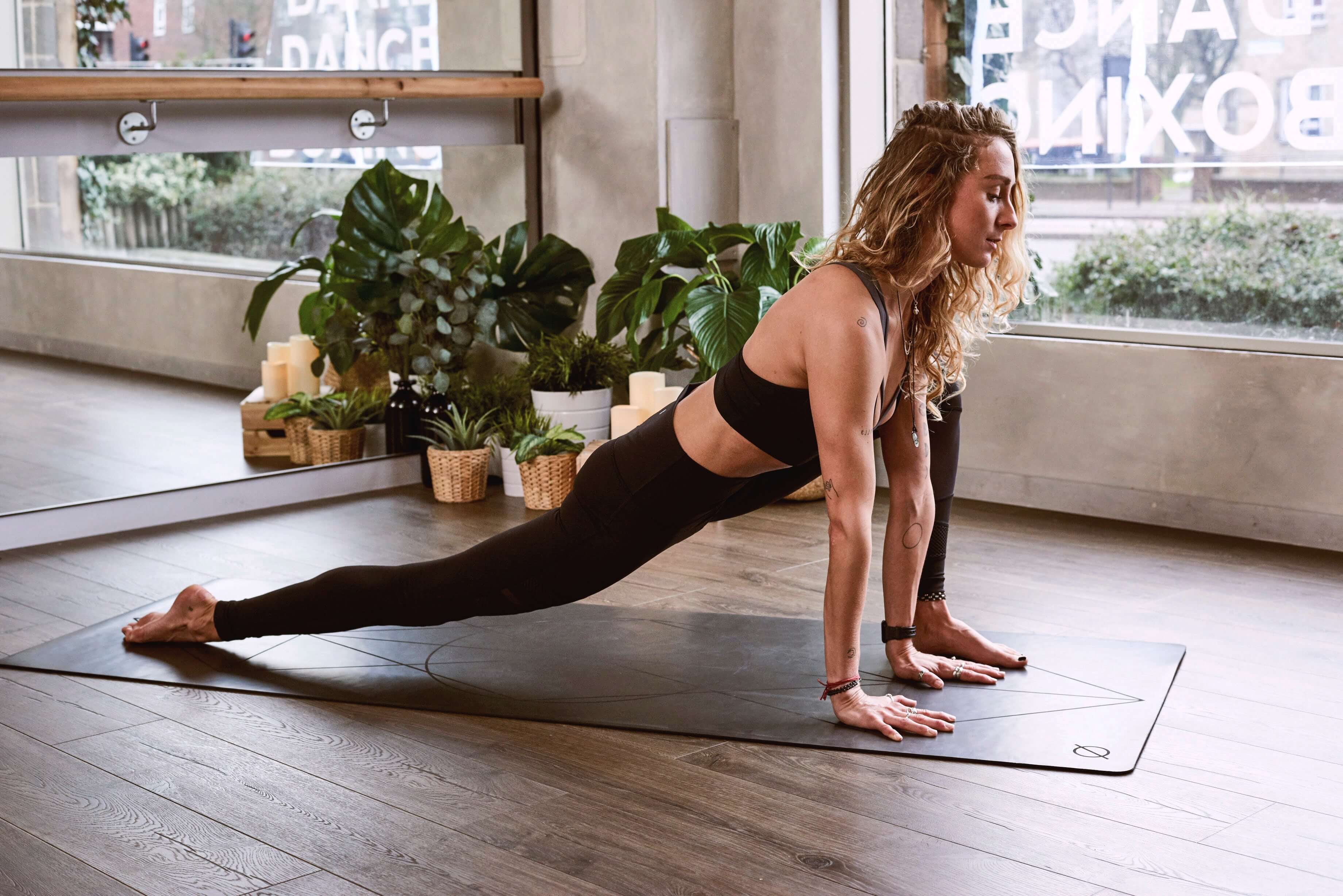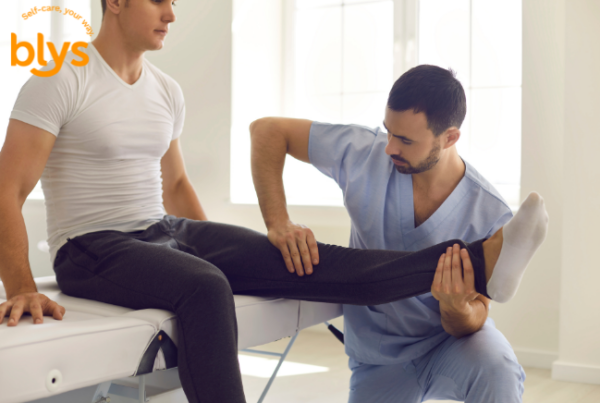Sciatic nerve pain can be a debilitating condition, whether it is chronic or episodic. Whilst sciatic is often a lifelong struggle to control, there are some simple exercises out there that help to manage this condition. These 6 stretches are easy enough to do at home no matter your physical condition, and they can greatly improve your experience of living with sciatic nerve pain.
An easy stretch for sciatic nerve pain:
- Sitting on a table, clasp your hands behind your back and slouch with chin to chest.
- Flex your foot (toes to ceiling) and extend the knee to test for range of motion and pain level on the affected side (your range of motion will be less, and more painful on this side, so be gentle).
- Do 10 reps on affected side, pausing at top and bringing leg back down slowly.
- After exercise and before stretching out the muscle, cross your affected leg over the unaffected one.
- Place a tennis ball ball under the butt cheek and roll up onto the ball. Roll around until you find the sore spot/trigger point.
- Do small circles on this spot for 30 seconds.
- With leg still crossed over, bend at waist and lean in different directions until you find the tightness. Stretch it for 30 seconds. You may need to pull at the knee to find the best stretch.
- Repeat set 2-3 times per sitting. Try to do it 2-3 times a day.
Notes on this stretch:
- Your quadratus lumborum (QL), in the lower back on both sides of the lumbar spine, is the deepest abdominal muscle. QLs have a lot of trigger points that may mimic sciatic nerve pain, so it is best practice to release the whole area (you may be affected by QL tension and not sciatic nerve pain). This will ensure you are getting maximum relief possible.
- Start by warming up and releasing the hamstring, IT band (the tendon that runs down the length of the outer thigh), and adductors so that they aren’t pulling on the muscles of the hip and it will be easier for you to release those muscles.
The six best exercises for easing sciatic nerve pain:
Reclining Pigeon Pose
This stretch affects the tiny piriformis muscle, which sometimes becomes inflamed and presses against the sciatic nerve, causing pain.
- On your back, bring your right leg up to a right angle. Clasp both hands behind the thigh, locking your fingers.
- Lift your left leg and place your right ankle on top of the left knee.
- Hold the position for a moment.
- Do the same exercise with the other leg.
Sitting Pigeon Pose
This stretches the glutes and lower back.
- Sit on the floor with your legs stretched out straight in front of you.
- Bend your right leg and put your right ankle on top of the left knee.
- Lean forward and allow your upper body to reach toward your thigh.
- Hold for 15 to 30 seconds.
- Repeat on the other side.
Forward Pigeon Pose
There are a few different variants of this one, but this is the classic version.
- Kneel on the floor on all fours, knees below hips and hands below shoulders.
- Bring the right knee forward and bend it at 90 degrees so that the right knee now sits between your hands and your right foot is beneath your left hip.
- Stretch the left leg out behind you on the floor, with the top of the foot on the ground and toes flexed into the floor. This is how you brace for support.
- Shift your body weight gradually from your arms to your legs. Sit up straight with your hands on either side of your legs.
- Take a deep breath, and on the exhale, lean your upper body forward over your front leg. Support your weight with your arms as much as possible.
- Repeat on the other side.
Knee to opposite shoulder
Remember to pull your knee only as far as it will comfortably go. You should feel a relieving stretch in your muscle, not pain.
- Lie on your back with your legs extended and your feet flexed upward (toes to sky).
- Bend your right leg and clasp your hands around the knee.
- Gently pull your right leg across your body toward your left shoulder.
- Hold it there for 30 seconds.
- Push your knee so your leg returns to its starting position.
- Repeat for a total of 3 reps, and then switch legs.
Sitting spinal stretch
This is a lovely, gentle stretch you can do throughout the day.
- Sit on the ground with your legs extended straight out with your feet flexed upward.
- Bring the right knee across the left leg and place your foot flat on the floor, on the outside of the left knee.
- Place your left elbow on the outside of your right knee to help you gently turn your body toward the right.
- Hold for 30 seconds and repeat three times, then switch sides.
Standing hamstring stretch
- Place your right foot on an elevated surface at or below your hip level. This could be a chair, ottoman, or step on a staircase.
- Flex your foot so your toes and leg are straight. If your knee tends to hyperextend, keep a slight bend in it.
- Bend your body forward slightly toward your foot. The further you go, the deeper the stretch. Do not push so far that you feel pain.
- Release the hip of your raised leg downward as opposed to lifting it up. If you need help easing your hip down, loop a yoga strap or long exercise band over your right thigh and under your left foot.
- Hold for at least 30 seconds, and then repeat on the other side.
Conclusion
It’s not always possible to prevent sciatic nerve pain, and the condition may recur. The following can play a key role in protecting your back:
- Exercise regularly. To keep your back strong, pay special attention to your core muscles — the muscles in your abdomen and lower back that are essential for proper posture and alignment. Ask your doctor to recommend specific activities.
- Maintain proper posture when you sit. Choose a seat with good lower back support, armrests and a swivel base. Consider placing a pillow or rolled towel in the small of your back to maintain its normal curve. Keep your knees and hips level.
- Use good body mechanics. If you stand for long periods, rest one foot on a stool or small box from time to time. When you lift something heavy, let your lower extremities do the work. Move straight up and down. Keep your back straight and bend only at the knees. Hold the load close to your body. Avoid lifting and twisting simultaneously. Find a lifting partner if the object is heavy or awkward.






